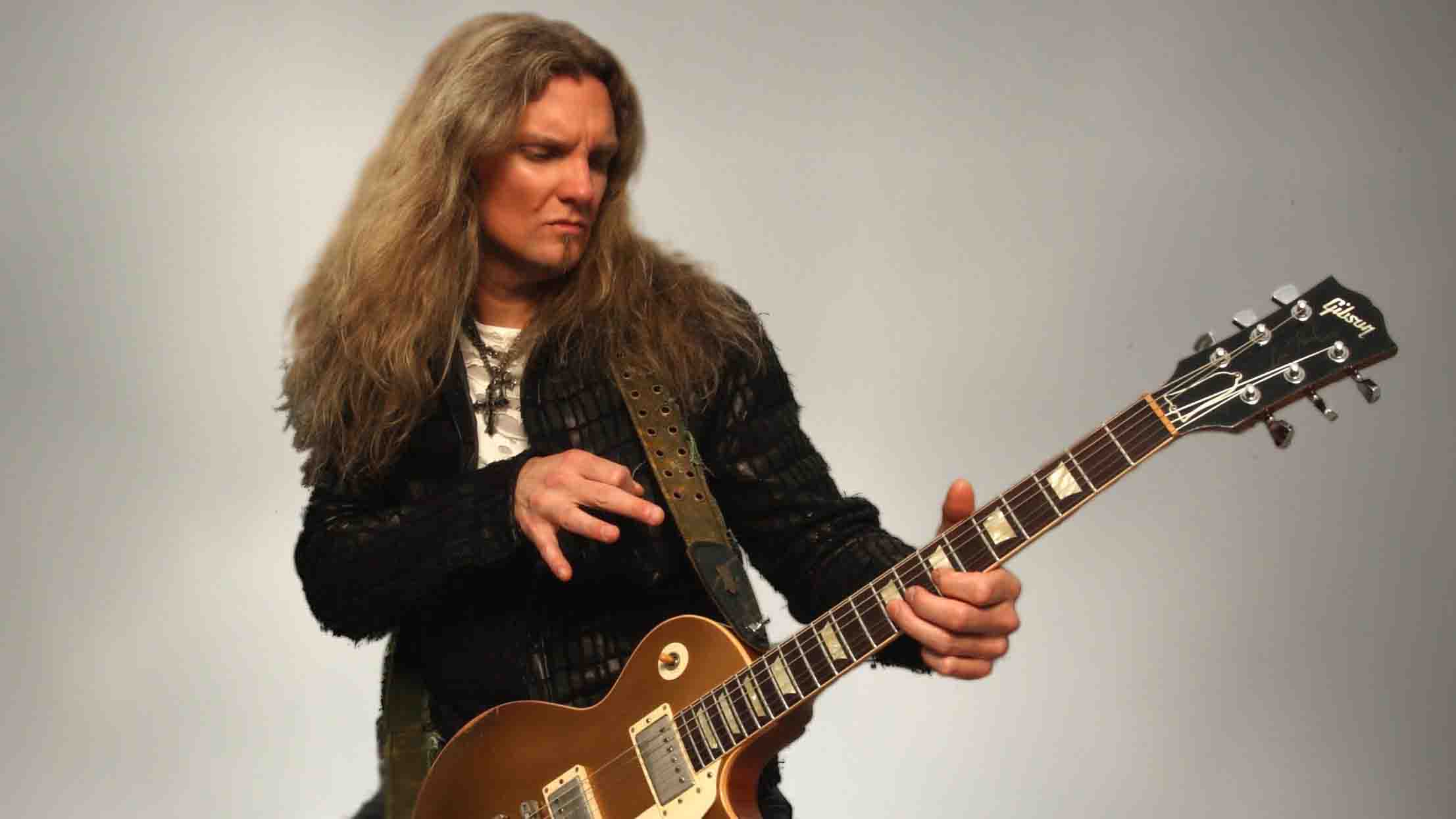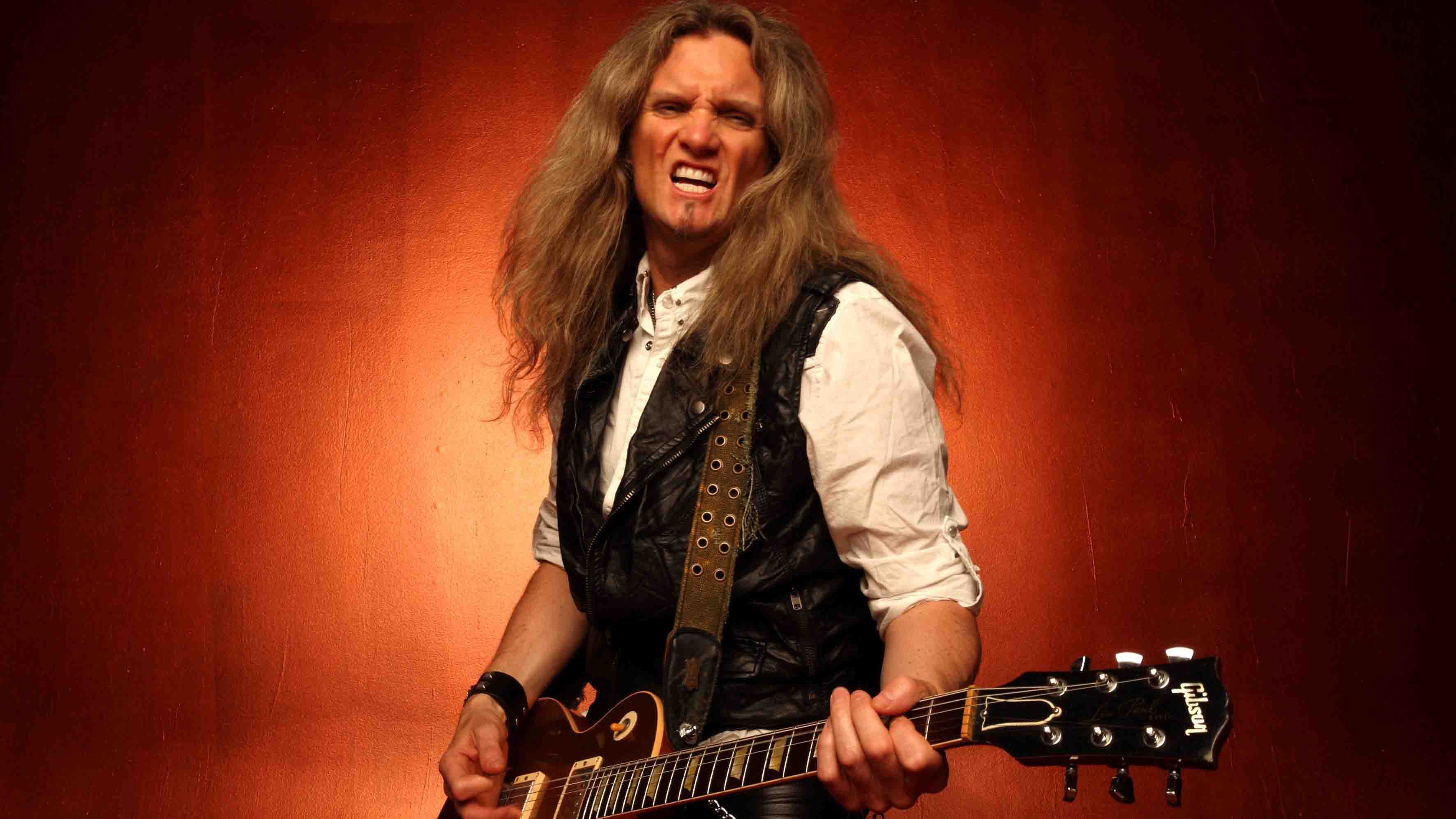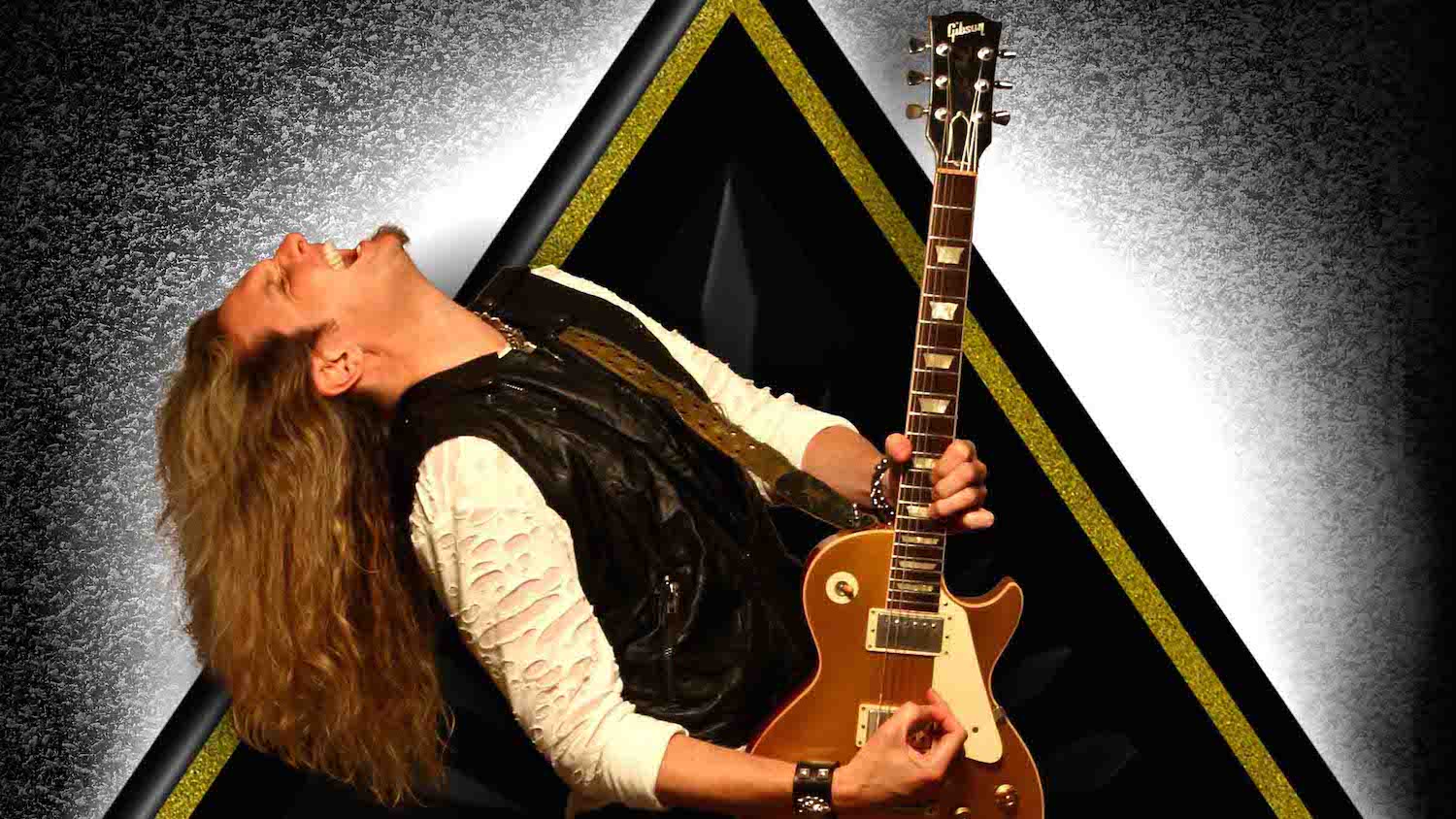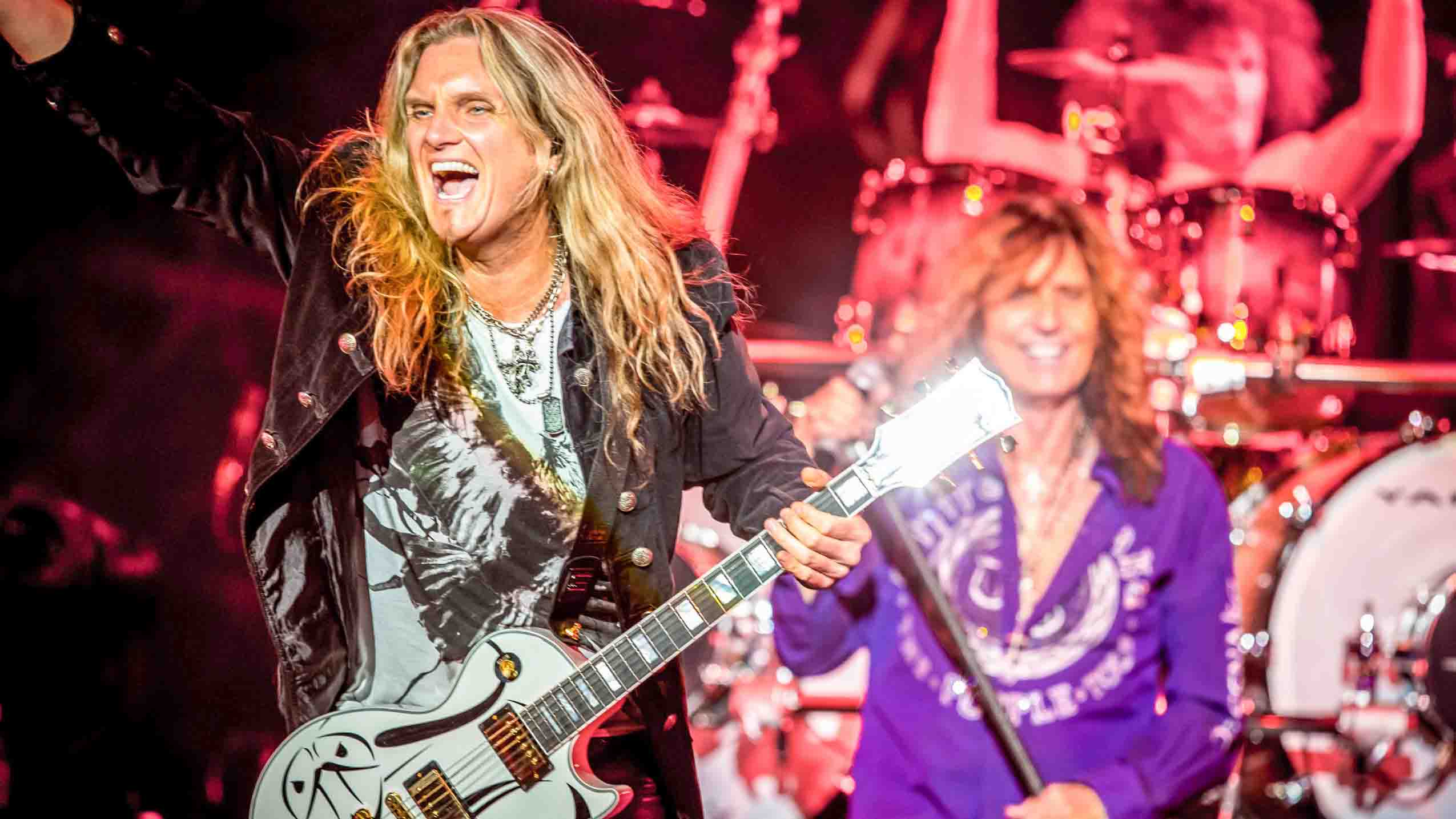Joel Hoekstra talks new album Dying To Live
Whitesnake guitarist on playing with Coverdale and co, and Joel Hoekstra's 13

Introduction
Even before you get to his more recent endeavours rocking world arena stages in Whitesnake, Joel Hoekstra’s curriculum vitae reads pretty damn impressive. He’s summoned the arctic winds in Trans-Siberian Orchestra, unleashed his inner guitar god in Rock Of Ages, covered Mick Jones in Foreigner, played for Twisted Sister’s Dee Snider, recorded with Evanescence songstress Amy Lee… you get the picture.
It certainly gives the impression that there’s little the New York-based gunslinger can’t do… and new album Dying To Live looks set to only further that. The 11 tracks that make up the debut offering from Joel Hoekstra’s 13 boast skyscraping melodies, herculean hooks and staggeringly inventive guitar work. It’s a far cry from the shredaholic widdlefest these kinds of projects often turn out to be and, if anything, the true magic of the music lies in the heart of the actual songs themselves.
“I really tried to avoid any wankage across the board,” laughs Hoekstra, calling from Tulsa, Oklahoma as Whitesnake’s crew begin loading into The Joint where the classic rockers will be headlining later tonight.
“Despite the fact that everyone playing on the record had some serious chops, it was really about the songs for me. I mean, there are solos but hopefully no point where the listener’s like, ‘Okay, this guitar player has gone on for three minutes now!’ I tried to make it about great musicians playing great songs.”

Forming the 13
When he says great musicians, he’s not lying. Black Sabbath/Dio legend Vinny Appice and The Firm’s Tony Franklin form the rhythm section behind a stellar cast of guests that includes keyboard wizard Derek Sherinian, singer Jeff Scott Soto and Symphony X frontman Russell Allen. That’s an incredible wealth of talent to have in one room, even more so for a new side-project. And truth be told, Dying To Live is an album that lives up to the promise of its rock ’n’ roll pedigree.
“I was honoured to have all these great musicians bring my songs to life,” says Hoekstra. “Jeff and I have known each other for some time through TSO and I’ve also co-written some things with him in the past. So he was probably the guy I knew the most, but I’ve also gotten to know Russell Allen who has been with TSO for the past few years, too.
“Tony Franklin and I used to work on a different project called VHF together… in fact, that’s kinda how this solo record started. And when I asked him who he would want to use on drums, he said Vinny Appice! I’d never met Vinny but grew up as a huge fan of his work in Sabbath and Dio, and the two of them sounded brilliant together.
“But I still needed some icing on the cake and wanted a killer keyboard player, so I started at the top of my list with Derek. Next thing I knew, there he was! I haven’t made many plans beyond release; I hope to letthe supply and demand system dictate where it goes from there.”

Get on the 'snake
It’s certainly an exciting time to be Joel Hoekstra. Right now, he’s touring the world with Whitesnake on their Purple tour – in support of their new album of the same name, comprised of remakes from David Coverdale’s years in Deep Purple – before hitting UK shores to co-headline arenas with Def Leppard.
He joined the multi-platinum selling rockers last year after long-serving guitarist Doug Aldrich decided it was time to part ways, and, as you’d expect, hasn’t looked back since…
“It’d be the same for any guitarist,” reasons Hoekstra. “And what an awesome catalogue of songs to play! Great riffs and great solos, plus getting to work with a rock royalty singer like David Coverdale. He’ll be sat there telling you stories about working with Jimmy Page and Ritchie Blackmore, and then the next minute it’ll be fart jokes, haha!
“I’m very grateful to him for giving me such a wonderful opportunity. Me and [co-guitarist] Reb Beach have such a blast locking on those riffs together, him panned left and me panned right, everything cranked super-loud… it’s rock ’n’ roll bliss! I’d say he’s one of the most underrated guitar players of his era. I always knew he was a great lead player, but I had no idea what a great singer he is, too.”
The guitarist had already met his new partner during a handover, when Beach was leaving Night Ranger for Whitesnake in 2008 and Hoekstra was his replacement. Six years later, history would repeat itself. But even with that strong sense of fate, surely replacing Aldrich – a guitarist widely lauded within the 'snake’s loyal legions – must have felt somewhat daunting?
“Oh yeah, Doug’s one of my favourite rock players out there,” admits Hoekstra, with genuine sincerity. “I have a huge amount of respect for him. But, honestly, it’s more about the fan’s expectations and my own expectations… I want to do my best. I don’t want to do my best version of Doug Aldrich because I’d probably end up being a bad version of him! I can only be the best version of me in Whitesnake, and approach it that way. I take a workmanlike mentality to it all, and so far so good!”

Keeping it simple
To recreate the classic guitar sounds that span across Whitesnake’s impressive 37-year career, Hoekstra chooses to keep things very simple indeed. Much like what you hear on Dying To Live, the core of the sound is driven by a Gibson Les Paul plugged into a Friedman BE100 half stack, with a Fractal Audio Axe-Fx II running in the effects loop to control live reverb and delay for sake of ease.
Considering how much gear Hoekstra has at his fingertips, it’s a pretty minimalist approach – but the guitarist explains it’s a simple formula that has been trusted behind some of the greatest ever rock tones recorded…
“Let’s face it: Whitesnake is a pretty much a straight-up, Les Paul into a Marshall kinda gig. I’ve just been using the Friedman because I’ve been digging the sound of it recently. And because we are doing some Deep Purple songs on this tours, I have a couple of Fender Strats out with me, too.
“Not long ago, I had the vision of customising a Les Paul with the Whitesnake medallions set in, and the same for a Strat, so I had those melted into the guitars! And for my solo, I use a guitar made by a small company called Atomic Guitar Works from the Phoenix area; it’s purple crystal on the top with a gold crystal Whitesnake medallion. That’s definitely been getting a lot of attention; mainly though, I’m a bit of Gibson Les Paul nut!”
It certainly would appear to be that way. By the guitarist’s own admission, there wasn’t a single other kind of axe used on Dying To Live. Even for the purposes of recording…
“People always say when you’re multi-tracking, use humbuckers and single-coils,” offers Hoekstra in closing. “But at least for me, nine times out of 10, I think it sounds better if I just keep stacking Les Pauls, haha! It’s strange, because I was more of a Tele and Strat kinda guy when I was younger. They have that combination of playability and a nice cutting fat tone. For me, they’re the perfect guitar.”
Joel Hoekstra's 13 releases Dying To Live on 16 October via Frontiers Music SRL.
Amit has been writing for titles like Total Guitar, MusicRadar and Guitar World for over a decade and counts Richie Kotzen, Guthrie Govan and Jeff Beck among his primary influences. He's interviewed everyone from Ozzy Osbourne and Lemmy to Slash and Jimmy Page, and once even traded solos with a member of Slayer on a track released internationally. As a session guitarist, he's played alongside members of Judas Priest and Uriah Heep in London ensemble Metalworks, as well as handling lead guitars for legends like Glen Matlock (Sex Pistols, The Faces) and Stu Hamm (Steve Vai, Joe Satriani, G3).
